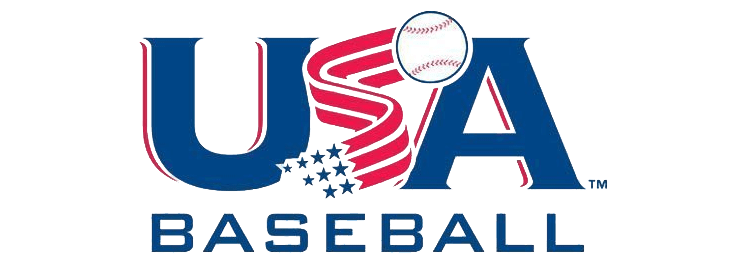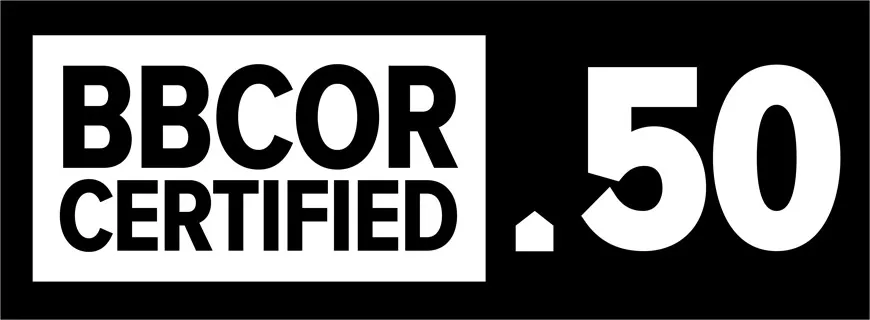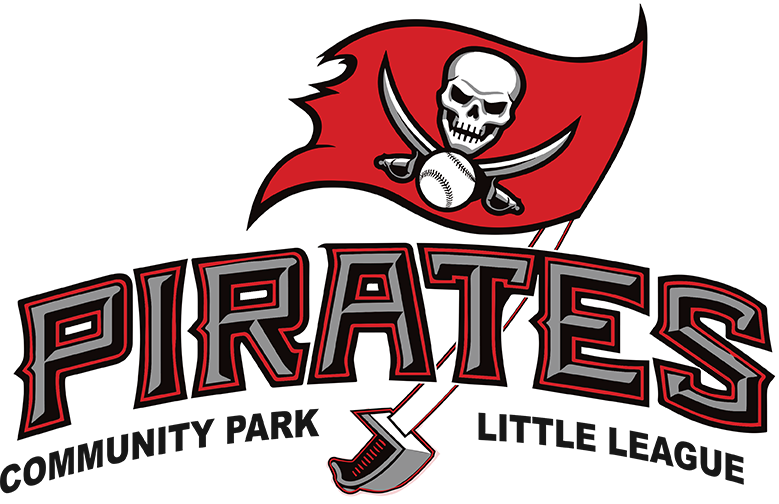As with all sports, there is specific equipment that is required for play and baseball is no different.
Community Park Little League provides some of the required equipment, but players are responsible for supplying some of their own as well.
When purchasing equipment for your player, ensure it is the appropriate size. Inspect its condition throughout the season to ensure it is not broken or damaged and is safe to use.
Please find below all information you need to ensure your player has the gear they need to succeed.
Equipment Supplied by Community Park Little League
CPLL provides to each player:
- Team uniform/jersey, baseball pants and belt – to be worn to every game and returned at the end of the season.
- Team hat and undershirt to keep.
CPLL provides to each team for use during the season:
- Team bat(s) that meet Little League regulations.
- Catcher’s equipment including catcher’s glove, mask, chest protector and shin guards.
- Batting helmets in case a child forgets their own.
- Baseballs for games and practices.
Required and Recommended Equipment by Division
Please find your player’s division below to learn which equipment they require for the season, and which is recommended.
Note: All players must arrive to games ready to play, in full uniform (jersey, pants, belt, ball cap) and with all required equipment.
Optional Equipment
Some optional equipment that players may provide for themselves:
- Baseball backpack or equipment bag
- Catcher’s equipment – each team has one full set of catcher’s equipment for use, but players may bring their own if they wish. Note: Catcher’s helmet must have a dangling throat guard, and only a catcher’s glove may be used while playing the position of Catcher.
- Practice pants – League supplied game pants are not to be worn for practices. Practice pants can be a good addition to your equipment closet as they are cooler than sweats on hot days and players may be sliding in practices, so shorts are not ideal.
How to Choose a Baseball Fielding Glove
Choosing the right glove for a Little League Player is essential for their comfort, safety, and performance. A properly fitting glove allows the player to focus on their game without distraction of an ill-fitting or uncomfortable glove. It provides better control over the ball, enhancing fielding and catching abilities, while also reducing the risk of injuries from impacts or improper catching techniques.
At the younger ages, when players are still learning all of the positions, a well-fitting all around glove is best. More advanced players may want to choose a specific sized glove based on the position(s) they play (eg. infield or outfield).
It’s important to understand how to measure a baseball glove. All baseball gloves and catcher’s mitts will have a size listed on them, usually in inches.
- To determine the size of a baseball glove, measure from the tip of the index finger along the palm to the heel of the glove.
- When looking for a catcher’s mitt, be aware the sizing is measure by the circumference of the mitt, and will range in size from 29.5″-34″.
When finding the right size, there are several factors to consider including hand size, age, and field position. Many brands also offer different fit options to suit different sizes of hands. Use the baseball size charts below to help narrow down your size options.
Youth Baseball Glove Size Chart
| Age | 5 & Under | 6-7 | 8-10 | 11-12 |
|---|---|---|---|---|
| Glove Size | 9″-10″ | 10″-10.5″ | 10.75″-11.5″ | 11″-12″ |
Junior/Senior & Adult Baseball Glove Size Chart
| Position | Infield | Outfield | First Base | Pitcher | Catcher |
|---|---|---|---|---|---|
| Glove Size | 11″-12.25″ | 12.5″-12.75″ | 12″-13″ | 11.5″-12.5″ | 32.5″-34″ |
Youth Catcher’s Mitt Size Chart
| Age | 7 and Under | 8-10 | 11-13 |
|---|---|---|---|
| Catcher’s Mitt Size | 29.5-30″ | 30″-32″ | 31″-32.5″ |
How to Choose the Right Baseball Bat
Bat Length
Choosing the right bat comes down to ensuring it is the right size for your player. Sizing is based on the length and weight of the bat and the player.
First, use the following quick tips to help determine the correct bat length needed:
Measure from your chest to fingertips:
- Have your player extend their arm horizontally so it is parallel to the ground. Measure from the centre of their chest to the end of their fingertips. Use this measurement to start finding the proper length.
Measure by height:
- Have your player stand with their arms hanging at their sides. While standing the bat on the ground at their side, the knob of the bat should be able to reach and rest on the palm of their hand.
Measure by arm length:
- Place the handle of the bat in the centre of the players chest. Extend the bat forward and if their arm can reach the barrel, the bat is an appropriate length.
Bat Weight & Bat Drop
Bat drop is how you can determine the weight of the bat in relation to the length.
For example, a 30″ baseball bat with a -10 drop would weigh 20 ounces. The higher the bat drop number, the lighter the bat will weigh in relation to the length.
In Little League, we must use bats with USA and/or BBCOR certifications. (See below for specific information on which certifications must be used in the different divisions.)
Bat Drops by Certification
| Bat Certifications | Drop Options |
| USA Baseball | -5, -8, -10, -11, -12, -13 |
|---|---|
| BBCOR | -3 |
- Players in Tee Ball, Rookie, Minor and Major divisions must use a bat approved through the USA Baseball Bat Standard and have the USA Baseball logo.
- Players in Intermediate and Junior divisions may use either USA Baseball Bat Standard bats or BBCOR bats.
- Players in the Senior division must use BBCOR bats.
Choosing the Right Baseball Bat Weight (and Drop)
- Ensure the bat you choose adheres to the Little League Bat Regulations.
- Assess the player’s strength. A light bat (higher drop) should be used for younger players, while stronger, more experienced players may choose a heavier bat that fits their style and level of play.
A general way to determine if a bat is too heavy or not is to have the player hold the bat straight out in front of them with one hand for 20 seconds without struggling. If they cannot do this, then a lighter bat is needed.
General Baseball Bat Size Chart – Common Bat Sizing
This chart is to give a general idea of what bat size/weight your player may need.
This is meant to be a guideline only, and your player’s bat requirements may differ from this chart.
| Weight/Height | 3’4″ & Under | 3’5″- 3’8″ |
3’9″- 4′ |
4’1″- 4’4″ |
4’5″- 4’8″ |
4’9″- 5′ |
5’1″- 5’4″ |
5’5″- 5’8″ |
5’9″- 6′ |
6’1″- Over |
|---|---|---|---|---|---|---|---|---|---|---|
| Under 60 lbs | 24″-26″ | 27″ | 28″ | 29″ | 29″ | |||||
| 61-70 lbs | 27″ | 27″ | 28″ | 29″ | 30″ | 30″ | ||||
| 71-80 lbs | 28″ | 28″ | 29″ | 30″ | 30″ | 31″ | ||||
| 81-90 lbs | 28″ | 29″ | 29″ | 30″ | 30″ | 31″ | ||||
| 91-100 lbs | 29″ | 29″ | 30″ | 30″ | 31″ | 31″ | 31″ | |||
| 101-110 lbs | 29″ | 29″ | 30″ | 30″ | 31″ | 31″ | 32″ | |||
| 111-120 lbs | 29″ | 29″ | 30″ | 30″ | 31″ | 31″ | 32″ | |||
| 121-130 lbs | 30″ | 30″ | 30″ | 31″ | 32″ | 32″ | 33″ | |||
| 131-140 lbs | 30″ | 30″ | 30″ | 31″ | 32″ | 32″ | 33″ | 33″ | ||
| 141-150 lbs | 30″ | 30″ | 31″ | 31″ | 32″ | 33″ | 33″ | 33″ | ||
| 151-160 lbs | 30″ | 31″ | 31″ | 31″ | 32″ | 33″ | 33″ | 34″ | ||
| 161-170 lbs | 31″ | 31″ | 32″ | 32″ | 33″ | 33″ | 34″ | |||
| 171-180 lbs | 31″ | 32″ | 32″ | 33″ | 34″ | 34″ | ||||
| 180 lbs and over | 33″ | 33″ | 34″ | 34″ |
Most Popular Length by Age:
| Age | 4-6 | 7-8 | 9-10 | 11-12 | 13-14 | 15-16 | 17+ |
|---|---|---|---|---|---|---|---|
| Length | 24-26″ | 26-28″ | 28-30″ | 30-31″ | 31-32″ | 32″-33″ | 33″-34″ |
Little League Bat Regulations
Bats used in Little League must adhere to the official Little League rules.
As of January 1, 2018, the new USA Baseball Bat Standard was implemented. USABat Standard bats must be used in the Little League Major Baseball Division and below. Either USABat Standard bats or BBCOR bats must be used at the Intermediate (50/70) Baseball and Junior League Baseball Divisions. At the Senior League Baseball Division, all bats must be meet the BBCOR standard.
For more information on the USABat standard and a complete list of bats approved through the USABat Standard, visit usabat.com.
As per Little League Baseball Rule 1.10:
The bat must be a baseball bat which meets the USA Baseball Bat standard (USABat) as adopted by Little League. It shall be a smooth, rounded stick, and made of wood or of material and color tested and proved acceptable to the USA Baseball Bat standard (USABat).
Non-wood and laminated bats used in the Little League (Majors) and below, Intermediate (50-70) Division, and Junior League divisions, shall bear the USA Baseball logo signifying that the bat meets the USABat – USA Baseball’s Youth Bat Performance Standard. All BPF – 1.15 bats are prohibited. The bat diameter shall not exceed 2⅝ inches for these divisions of play. Bats meeting the Batted Ball Coefficient of Restitution (BBCOR) standard may also be used in the Intermediate (50-70) Division and Junior League Division. Additional information is available at LittleLeague.org/batinfo.

Bats meeting the Batted Ball Coefficient of Restitution (BBCOR) standard may also be used in the Intermediate (50-70) Division and Junior League Division. Additional information is available at LittleLeague.org/batinfo.

Tee Ball
Under the USABat standard, certified Tee Ball bats (26″ and shorter) will feature the USA Baseball mark and text which reads ONLY FOR USE WITH APPROVED TEE BALLS.
Rookie
It shall not be more than 33 inches in length; nor more than 2⅝ inches in diameter, and if wood, not less than fifteen-sixteenths (15/16) inches in diameter (7/8 inch for bats less than 30″) at its smallest part. Wood bats taped or fitted with a sleeve may not exceed sixteen (16) inches from the small end.
NOTE 1: Solid one-piece wood barrel bats do not require a USA Baseball logo.
NOTE 2: Approved Tee Ball bats may also be used for Coach Pitch/Machine Pitch Rookie Divisions only with the use of approved Tee Balls.
Minor/Major
It shall not be more than 33 inches in length; nor more than 2⅝ inches in diameter, and if wood, not less than fifteen-sixteenths (15/16) inches in diameter (7/8 inch for bats less than 30″) at its smallest part. Wood bats taped or fitted with a sleeve may not exceed sixteen (16) inches from the small end.
NOTE 1: Solid one-piece wood barrel bats do not require a USA Baseball logo.
Intermediate/Junior
It shall not be more than 34″ inches in length; nor more than 2⅝ inches in diameter, and if wood, not less than fifteen-sixteenths (15/16) inches in diameter (7/8 inch for bats less than 30″) at its smallest part. Wood bats taped or fitted with a sleeve may not exceed eighteen (18) inches from the small end.
NOTE 1: Solid one-piece wood barrel bats do not require a USA Baseball logo.
NOTE 2: Also, permitted for the Intermediate (50-70) Division and Junior League Division are bats meeting the BBCOR performance standard, and so labeled with a silkscreen or other permanent certification mark. The certification mark shall be rectangular, a minimum of a half-inch on each side and located on the barrel of the bat in any contrasting color. Aluminum/alloy and composite bats shall be marked as to their material makeup being aluminum/alloy or composite. This marking shall be silkscreen or other permanent certification mark, a minimum of one-half-inch on each side, and located on the barrel of the bat in any contrasting color.
Senior
It shall not be more than 36 inches in length, nor more than 2⅝ inches in diameter, and if wood, not less than fifteen-sixteenths (15/16) inches in diameter (7/8 inch for bats less than 30″) at its smallest part. Wood bats taped or fitted with a sleeve may not exceed eighteen (18) inches from the small end. The bat shall not weigh, numerically, more than three ounces less than the length of the bat (e.g., a 33-inch-long bat cannot weigh less than 30 ounces). All bats not made of a single piece of wood shall meet the Batted Ball Coefficient of Restitution (BBCOR) performance standard, and such bats shall be so labeled with a silkscreen or other permanent certification mark. The certification mark shall be rectangular, a minimum of a half-inch on each side and located on the barrel of the bat in any contrasting color. Aluminum/alloy and composite bats shall be marked as to their material makeup being aluminum/alloy or composite. This marking shall be silkscreen or other permanent certification mark, a minimum of one-half-inch on each side, and located on the barrel of the bat in any contrasting color.
In all divisions, non-wood bat must have a grip of cork, tape, or composition material, and must extend a minimum of 10 inches from the small end. Slippery tape or similar material is prohibited.
NOTE 1: The traditional batting donut is not permissible.
NOTE 2: The use of pine tar or any other similar adhesive substance is prohibited at all levels of Little League Baseball. Use of these substances will result in the bat being declared illegal and removed from play.
NOTE 3: Non-wood bats may develop dents from time to time. Bats that have cracks or sharp edges, or that cannot pass through the approved Little League bat ring for the appropriate division must be removed from play. The 2-1/4-inch bat ring must be used for bats labeled 2-1/4. The 2-5/8-inch bat ring must be used for bats labeled for 2-5/8.
NOTE 4: An illegal bat must be removed. Any bat that has been altered shall be removed from play. PENALTY – See Rule – 6.06(d).
